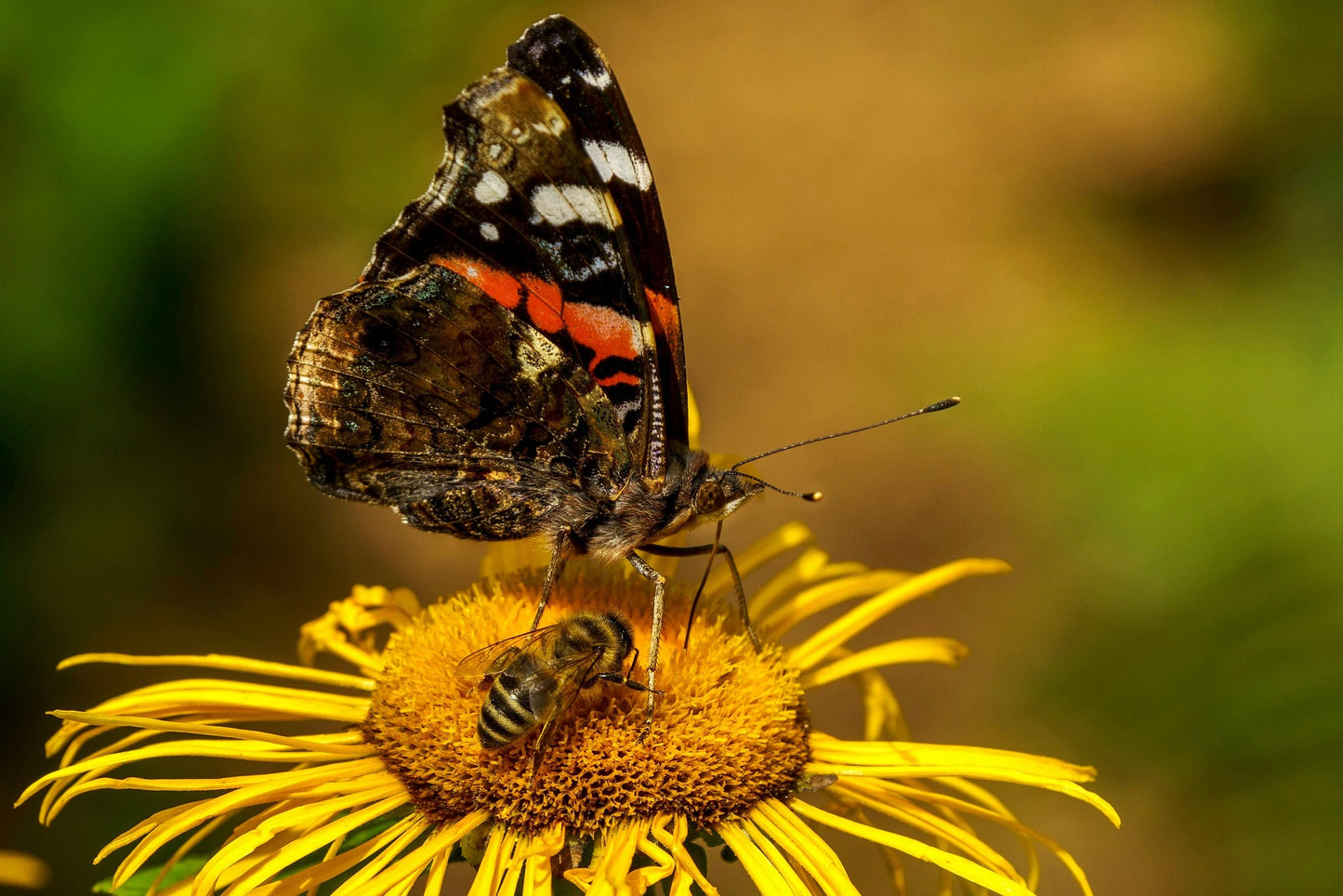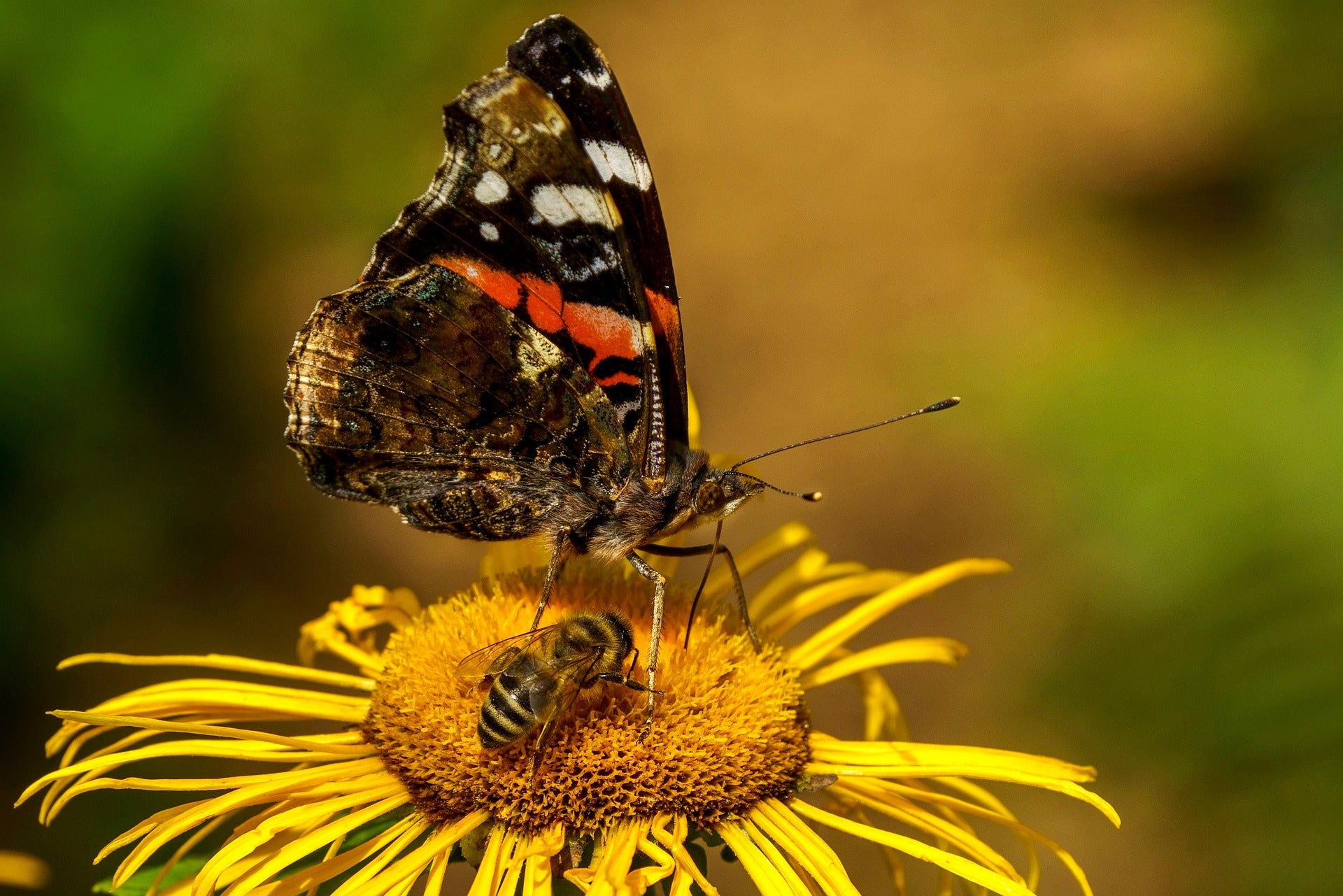SPECIAL FLOWER MIX FOR BEES AND BUTTERFLIES
SPECIAL FLOWER MIX FOR BEES AND BUTTERFLIES
Packet Size: for 4 square metres
Couldn't load pickup availability
Packed with nectar-rich flowers, this mix is perfect for attracting bees, butterflies, and other beneficial insects to your garden. They’ll help with pollination and natural pest control — plus, you’re supporting native British wildlife.
Sow on weed-free soil or start in large seed trays you can move around. There are no grasses here — just flowers blooming from May to October.
This packet contains enough seed for about 4 square meters.
Wildlife Benefits
This mix supports a wide range of pollinators and helpful insects that make your garden healthier and more balanced.
- Hemp Agrimony: Favoured by bumblebees (like the Buff-tailed Bumblebee) and butterflies such as Peacock and Red Admiral.
- Bird's Foot Trefoil: Attracts solitary mining bees and is a key food plant for Common Blue and Brown Argus butterflies.
- Borage: Popular with honeybees and bumblebees (including the White-tailed Bumblebee).
- Red & White Clover: Supports honeybees, bumblebees (like the Early Bumblebee), and hoverflies.
- Cornflower: Attracts bees and butterflies such as the Painted Lady.
- Dwarf Sunflower: Visited by honeybees and bumblebees; later provides seeds for finches and tits.
- Foxglove: A favourite of long-tongued bumblebees like the Garden Bumblebee.
- Goatsbeard: Attracts bees and butterflies including Small Tortoiseshell.
- Knapweed (Common & Greater): Important nectar source for bumblebees, solitary bees, and butterflies like the Marbled White.
- Marjoram: Supports bees and butterflies including the Small Copper, and draws hoverflies—natural pest controllers.
- Meadow Cranesbill: Attracts bees and hoverflies, which eat aphids.
- Musk Mallow: Used by bees and moths such as the Burnished Brass.
- Oxeye Daisy: Favoured by bees, butterflies like the Gatekeeper, and moths.
- Field Poppy: Favoured by solitary mining bees.
- Purple Loosestrife: Nectar source for bees and butterflies including Red Admiral.
- Ragged Robin: Attracts bees and butterflies like the Large White.
- Sainfoin: Important for bumblebees and solitary bees like Mason bees.
- Field & Small Scabious: Favoured by bumblebees, butterflies (Small Heath), and moths such as the Six-spot Burnet.
- Teasel: Attracts bumblebees and later feeds birds like goldfinches.
- Kidney Vetch: Key food plant for the Small Blue butterfly and visited by mining bees.
- Viper’s Bugloss: Attracts bumblebees (e.g., Buff-tailed Bumblebee), honeybees, and butterflies like the Common Blue.
- Wild Clary: Favoured by bees and butterflies.
- Yarrow: Supports a wide range of beneficial insects including bumblebees, lacewings, and parasitic wasps that help control pests naturally.
Alongside all these pollinators, this mix also draws in helpful insects like hoverflies, ladybirds, parasitic wasps, lacewings, and predatory beetles — all natural pest controllers that keep your garden healthy without chemicals.
SOW & GROW
Almost as simple as throw and grow — just scatter and enjoy the show (and the visitors).
When to sow: March or April, for flowers from May through to October.
Where: Best sown straight onto bare, weed-free soil in full sun. You can also sow into large seed trays or troughs to move around the garden as needed.
Prep the ground: Remove all weeds and rake the soil to a fine, crumbly texture.
Mix it up: For easier sowing, mix the seed with a bit of sharp sand or vermiculite so you can see where it’s landed and get an even spread.
How to sow: Broadcast the seed evenly over the surface. No need to bury it — just press it in lightly or rake over gently.
Watering: Water after sowing and keep the soil moist during germination. Once the plants are up and growing, they’re easy to care for.
Aftercare: Weed lightly if needed, but otherwise let the mix do its thing — and enjoy watching all the bees, butterflies, and other visitors arrive.

Collapsible content
Sowing
- Mar
- Apr
Harvesting / Flowering
- May
- Jun
- Jul
- Aug
- Sep
- Oct

